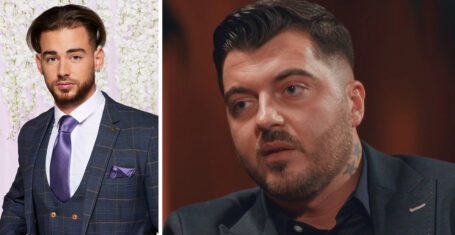
Is Beauty in the Eye of the Stake-Holders?
As the fashion and beauty industry use every screen, billboard and publication possible to bombard us with their ideal image of perfection, Chidi Ilobi asks ‘Is our idea of beauty decided for us?’
I will be the first to admit that I am mad about shows about modelling. Whether they’re about girls competing to become models or working models competing to remain relevant, or the word ‘Model’ is simply included in the title, said shows are no rare find in my Sky+ library.
I’d say it’s the behind-the-scenes insight into what was once a mysterious industry that appeals to me; often I look at an ad campaign for Diesel or Urban Outfitters and think “Huh, I wonder why that girl is walking through that deserted forest all alone. Is she lost? Maybe she should call someone to come get her.” And, while such shows do not inform me of whether or not the poor girl has phone reception, they do answer a lot of other questions, like how much the average model makes in a week, what models’ career options are after most retire at twenty-two and other, similarly trivial curiosities.
Recently, I’ve begun to wonder whether all my model-watching, combined with the constant feed of fashion advertising throughout these shows (and most other shows that I watch, for that matter), has had any impact on my view of ‘beauty’. The popular public opinion seems to be that most models are too skinny and that the fashion industry should portray more ‘real women’. Although I agree that portraying just one body type as ‘beautiful’ is so very wrong, it has to be said that plenty of models’ bodies are, in fact, real. Outside of the world of models and magazines, there are plenty of women who are naturally skinny and tall and they are just as ‘real’ as the rest.
While the fashion world’s idea of a beautiful body may be rather obvious and clearly not to everyone’s liking, I do question whether the industry has altered our view on facial beauty to match theirs.
My suspicion arose while watching a rerun of America’s Next Top Model, Cycle 15 – the makeover episode – during which Chelsey, a contestant with a slight gap between her two front teeth, paid a trip to the orthodontist to have her gap widened.
During Cycle 6 of the same show, Danielle Evans (who went on to win the show) declined Tyra Banks' offer to have her gap closed completely, referring to the space between her incisors as her ‘signature gap’. Her refusal caused a bit of a stir, with the judges believing that a gap between her teeth would hinder her career.
Fast-forward 9 cycles and gaps are not just welcomed, but enhanced! I’m guessing Tyra's change of heart had something to do with gap-toothed models appearing in fashion ad campaigns far and wide, from Versace to Rimmel. But it’s not just Tyra and her posse that have been influenced by this growing trend. Reports state that the number of women in the USA opting for more alternative orthodontic treatment is growing rapidly, even though gap-toothed veneers are in fact more expensive than the traditional straight white set.
I realise not everyone is completely sold on gap-toothed glamour. However, judging by the rising requests for such off-beat orthodontic surgery, the fashion industry seems to have successfully altered the idea of what some American women consider beautiful.
This realisation has caused me to question everything that I have ever considered aesthetically pleasing. I mean, are high cheekbones really even that great or have I just been brainwashed by countless fashion and beauty adverts into thinking they are? And just how far does the industry’s power stretch? If Abercrombie began exclusively featuring girls with moustaches in their campaigns, would there be a queue around the corner of Harley Street for facial hair implants? You laugh now, but they laughed at Danielle and look how that turned out…









































